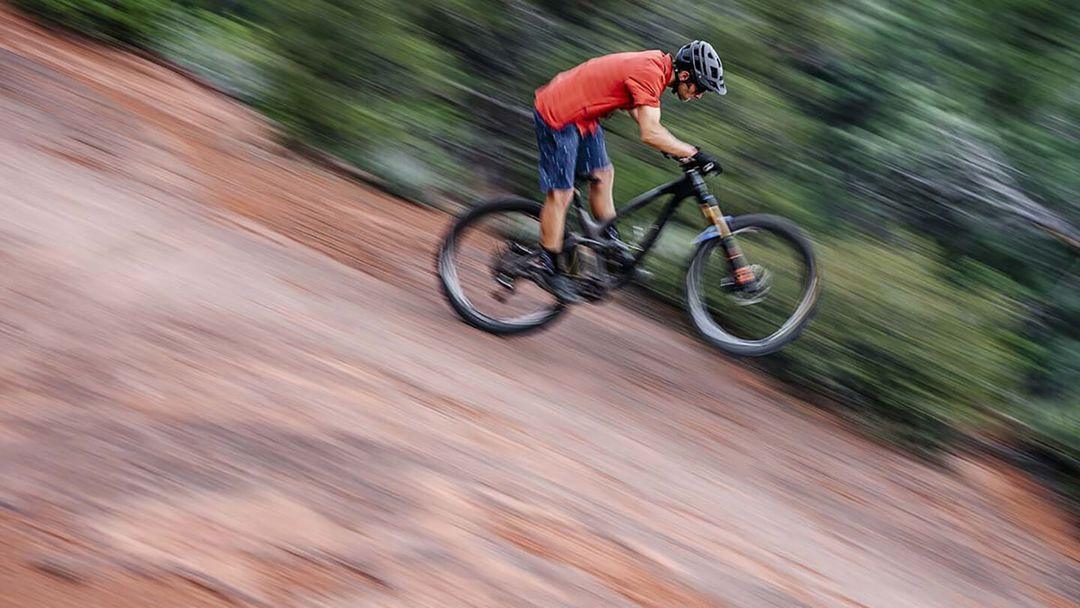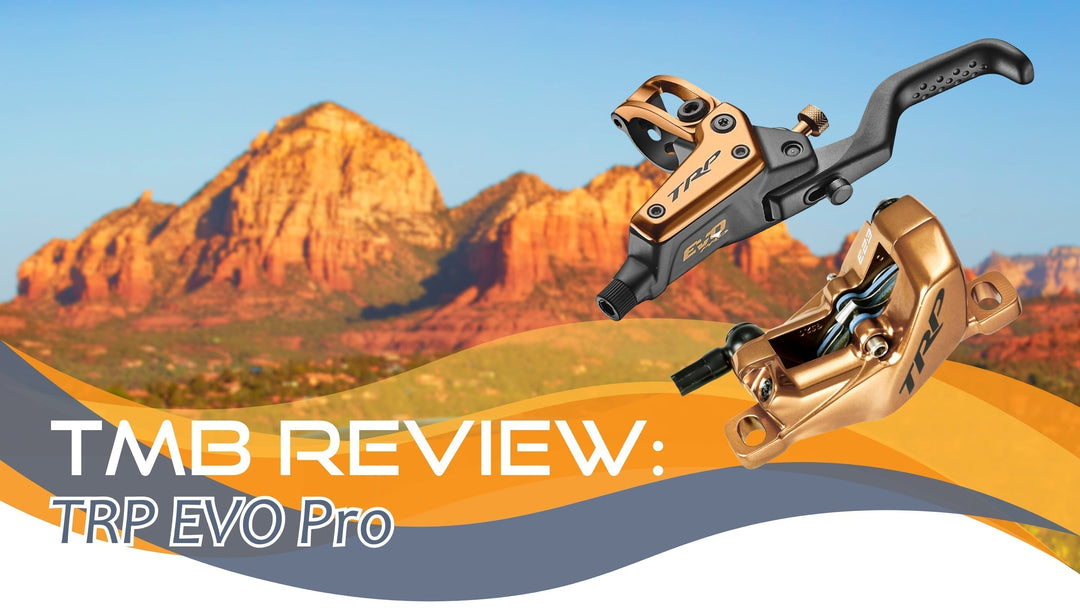What is Enduro Mountain Biking?

These segments are most often downhill and utilize the most technical sections of trail. In order to get to these segments, riders have to pedal their bike uphill, sometimes for hours, just to get enough elevation for these downhill trails. The uphills are not timed, however, only the downhill segments are timed - making Enduro a fun format for riders to emphasize bike handling skills over straight up fitness.
Over the years, Enduro mountain biking has become a term that means more than just racing, it describes a category of bikes and a style of riding. This style of riding is all about emphasizing the downhill sections of trails, and the uphills to get there can be pedaled at a comfortable “social” pace. For many riders, this uphill pace is more inviting and the downhill pace is more fun. Many riders joke that they were enduro before enduro even existed, since this is how they have always ridden. Enduro has grown into being a catch-all mountain bike phrase – as a way to describe uber technical trails, bike components that are durable and perform best on rough trails, and bike gear that provides more protection and style than traditional lycra bike clothing.

History of Enduro Mountain Biking
Enduro mountain biking is a relatively new category, tracing back to France in the early 2000’s. Taking inspiration from off road enduro motorcycle racing, where certain segments or “stages” were timed. A group of French mountain bike race organizers took this concept to the big alpine mountains of France, where riders pedaled to the top – untimed – and then raced down multiple stages on the best trails the organizers could find. This new format caught on quickly, and by 2013 an Enduro World Series was formed, officially making enduro a recognized category.
Before enduro racing came around, the bike industry had a general term to describe this style of riding. That was called “All Mountain” back then, and it was already a growing category. It could even be described as the surfing or snowboarding of mountain biking. With enduro being the recognized race format for all mountain riding, the term enduro has since taken over to describe this category.

Enduro Bikes vs Trail Bikes vs Downhill Bikes
Mountain bikes are categorized into 4 categories; trail enduro downhill and cross country. The easiest way to distinguish between these categories is by how much suspension travel the bike has. There are many other details that make these bikes different, but suspension travel is the most straight forward starting point. Below are the 4 categories and their corresponding suspension travel. Here at Thunder Mountain Bikes, all of our Sedona mountain bike rentals are Trail and Enduro bikes.
Enduro Bikes - 140-170mm of suspension travel. Complete bike weight is typically around 30-35 lbs.
Trail Bikes - 120-140mm of suspension travel. Complete bike weight is typically around 26-32 lbs.
Downhill Bikes - 170-200mm of suspension travel. Complete bike weight is typically around 38-44 lbs.
Cross Country Bikes - 90 – 120mm of suspension travel. Complete bike weight is typically around 20-26 lbs.
As you can see, an enduro style mountain bike is between the downhill bike and trail bike categories. To help further define what is an enduro bike, it’s designed to favor rugged downhills going as fast as possible. This requires frame geometry (like head angle, wheelbase length, etc) that is close to downhill bikes, and components that are more durable and heavier than trail bikes. Enduro bikes make a compromise in climbing efficiency in favor for downhill speed and stability. The ideal terrain for enduro bikes involves a long fire road type climb, followed by a long rugged descent.

With Sedona mountain biking consisting of short punchy ups and downs, a true enduro bike takes more effort to maintain momentum through rolling terrain. For this reason, Sedona bike shops mostly offer trail bikes as their primary Sedona mountain bike rentals. Trail bikes offer the best combination of efficiency and stability for Sedona terrain. But, for Sedona’s black diamond trail features, an enduro bike can offer the rider more stability and confidence - to the point of making a scary looking drop a cakewalk to ride through. Having both types of bikes at Thunder Mountain Bikes, it’s a great opportunity to rent out a few models and see what feels best to you!
Enduro Mountain Bike Gear and Accessories in Sedona, AZ
With Sedona Arizona mountain biking being made up of rocky and rough trails, enduro style mountain bike gear is recommended. Luckily, enduro gear is comfortable with a casual style, much more appealing to a broader range of people compared to traditional cycling gear. Enduro gear is also a worthy investment towards keeping you safe and comfortable on the roughest of trails, as every rider knows, the occasional spill is all part of the game. Here’s a few bits of gear to consider:
Enduro Ride Clothing – Look for comfortable baggy style shorts and jerseys. But, these are not baggy in the traditional sense, these still have an athletic cut and fitted in just the right spots to avoid getting snagged. Thunder Mountain Bikes offers shorts and jerseys from Club Ride, Zoic, Troy Lee Designs, Fox, Shredly, and Patagonia.

Hydration Options for Enduro Riding – The latest trend for carrying hydration while riding is the hip pack, or fanny pack, as it used to be called. What makes the hip pack so great is that there’s less material on your back and no straps around your shoulders. Compared to a hydration backpack, this gives an extra feeling of freedom to move as you need, especially while trying to surf the dirt. The favorite hip packs at Thunder Mountain Bikes are made by Osprey and Bontrager, with models that carry water bottles or water reservoirs, along with enough cargo room to bring a snack, tools, and jacket. As a bonus, Bontrager Rapid is the lightest hip pack we’ve found.

Knee and Elbow Pads for Enduro Mountain Biking – Knee and elbow pads have progressed quite a bit since the enduro category has taken off. These pads used to be bulky, heavy, and sweaty. These days, pads are lightweight, breathable, and very flexible. They even utilize a gel material that hardens on impact, helping these pads to freely move with your body. Thunder Mountain Bikes carries these styles of knee and elbow pads from G Form, Troy Lee Designs, and Fox.

Helmets for Enduro Mountain Biking – Just like the pads have progressed for enduro, so have the helmets. Helmets are better than ever, and your most important piece of gear, considering it’s your brain we’re talking about. For enduro racing, full face helmets are usually required. For general enduro riding, the standard style half shell helmet is fine. Compared to traditional cycling helmets, these newer helmets feature dual density foams to take multiple impacts, rotational movement (like MIPS technology) to reduce concussion, more coverage in the back and sides, a burly visor, and a stout retention strap. Thunder Mountain Bikes carries great helmet options from Fox, Giro, Troy Lee Designs, Smith, and Kali.

Conclusion
Enduro mountain biking has become a fun and exciting category, growing the sport of mountain biking into more of a lifestyle. While not every enduro rider needs to race, the racing at the top level has greatly progressed the bikes and the gear, benefiting all of us. Even if you live and ride in an area that doesn’t need a true enduro bike, the influence of enduro has made Trail and Cross country bikes that much better and more fun to ride. After all, it’s all about the ride!





